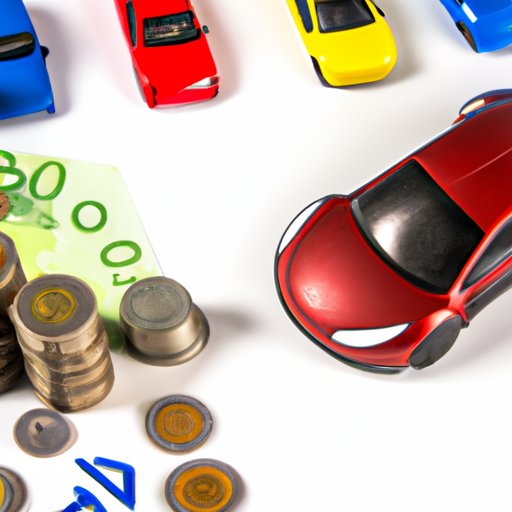Introduction
Buying a new car is always exciting, but it can also be a daunting task. One of the most important decisions you will make is deciding whether or not to trade in your current vehicle. Trading in your car can be a great way to save money and upgrade to a newer model, but there are potential risks associated with trading in your car that you should consider before making your decision. In this article, we will explore when is the best time to trade in your car and how to get the most out of it.
Analyzing the Value of Your Current Vehicle
The first step in determining when to trade in your car is to understand the value of your current vehicle. The two main components of your car’s value are the market value and the trade-in value. The market value is the amount you could realistically expect to sell your car for if you were to list it on the open market. The trade-in value is the amount you would receive if you traded it in at a dealership. Generally speaking, the trade-in value is lower than the market value since dealerships have to resell the car and need to make a profit.
In order to determine the value of your car, you will need to assess its condition. Factors such as mileage, age, and condition of the interior and exterior of the car will all affect its estimated worth. You can use online tools like Kelley Blue Book or Edmunds to get an estimate of what your car is worth.
Researching the Most Favorable Trade-In Deals
Once you know the approximate value of your car, you can start researching trade-in deals from different dealerships. Comparing offers from different dealerships is a great way to ensure that you get the best deal possible. It is also important to investigate any incentives, rebates, and discounts available that could sweeten the deal. Many dealerships offer special promotions and deals that can significantly reduce the cost of a new car.

Comparing New Car Prices and Features
Before you commit to a trade-in deal, it is important to look at the sticker price and research the features of new cars. This will help you decide if the extra cost associated with buying a new car is worth it. It is also important to examine financing options and costs associated with a new car. If you are taking out a loan to finance the purchase of a new car, you should compare loan rates and terms from different lenders to make sure you get the best deal possible.

Looking at Your Financial Situation
Another important factor to consider when deciding when to trade in your car is your financial situation. You should calculate the monthly payments and total cost of ownership to determine if a new car payment fits into your budget. Consider other expenses such as insurance, fuel, and maintenance costs when evaluating the impact of a new car payment on your budget.
Considering the Cost of Repairs and Maintenance
It is also important to take into account the cost of repairs and maintenance for your current car. Estimate the cost of repairs and maintenance that may be needed in the near future and compare it to the cost of repairs and maintenance for a new car. In some cases, it may be more cost-effective to repair and maintain your current car rather than trade it in.
Examining Potential Tax Benefits
In addition to saving money on the purchase of a new car, trading in your car may also provide tax benefits. Depending on your situation, you may qualify for government incentives for buying a new car or for certain tax credits or deductions. It is important to speak with a tax professional to determine if you qualify for any tax benefits before committing to a trade-in deal.

Understanding the Risks of Trading in Early
If you are still making payments on your current car, it is important to evaluate whether or not it is worth trading in before your car is paid off. According to a study by Experian Automotive, “Nearly one-third (31.1%) of consumers who traded in vehicles in the fourth quarter of 2014 had negative equity, owing an average of $4,832 more than their vehicles were worth.” This means that they traded in their cars while they still owed money on them. Before trading in your car early, make sure you understand the potential financial implications of doing so.
Conclusion
Trading in your car can be a great way to save money and upgrade to a newer model. However, there are many factors to consider before making your decision. Analyzing the value of your current vehicle, researching trade-in deals, comparing new car prices and features, looking at your financial situation, considering the cost of repairs and maintenance, and examining potential tax benefits are all important steps in determining when is the best time to trade in your car. By weighing the pros and cons carefully, you can make an informed decision that will help you get the most out of your trade-in.
(Note: Is this article not meeting your expectations? Do you have knowledge or insights to share? Unlock new opportunities and expand your reach by joining our authors team. Click Registration to join us and share your expertise with our readers.)
